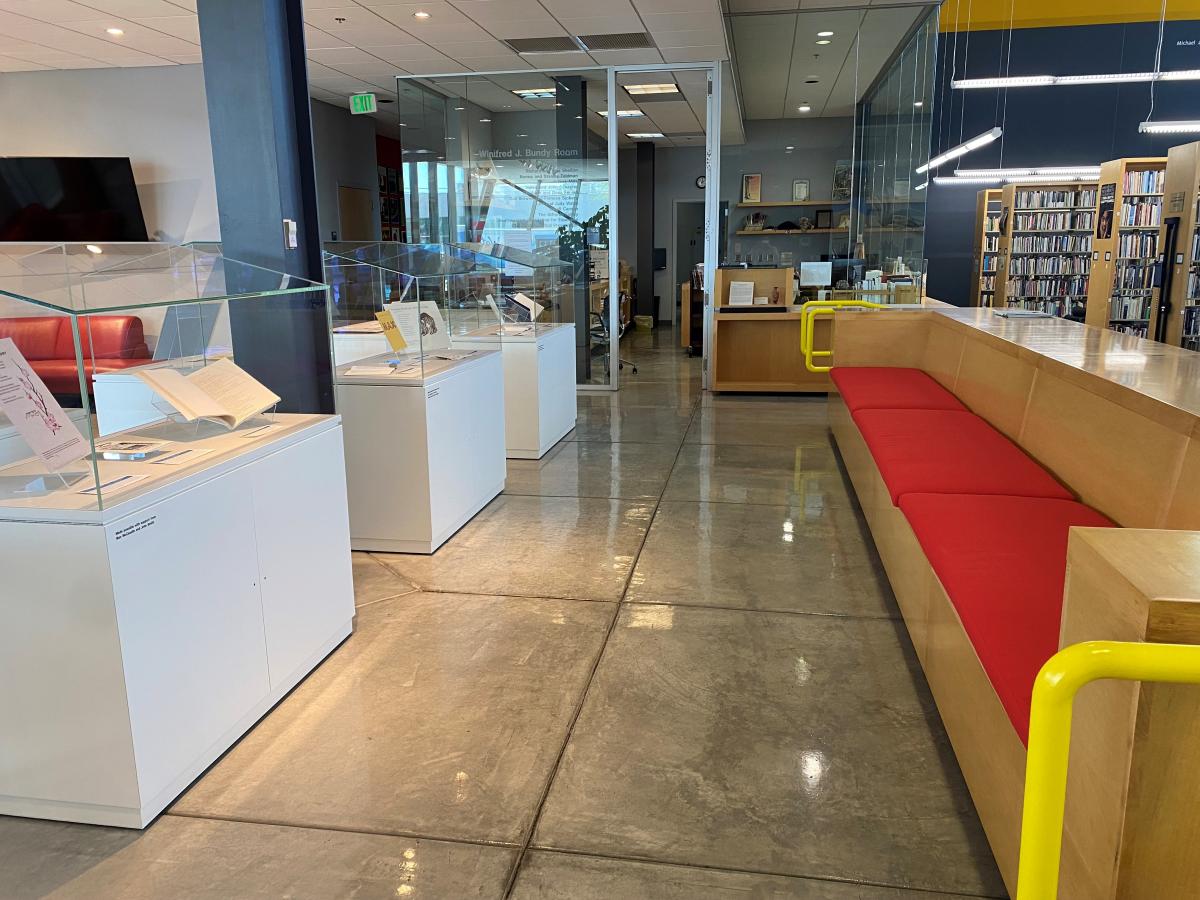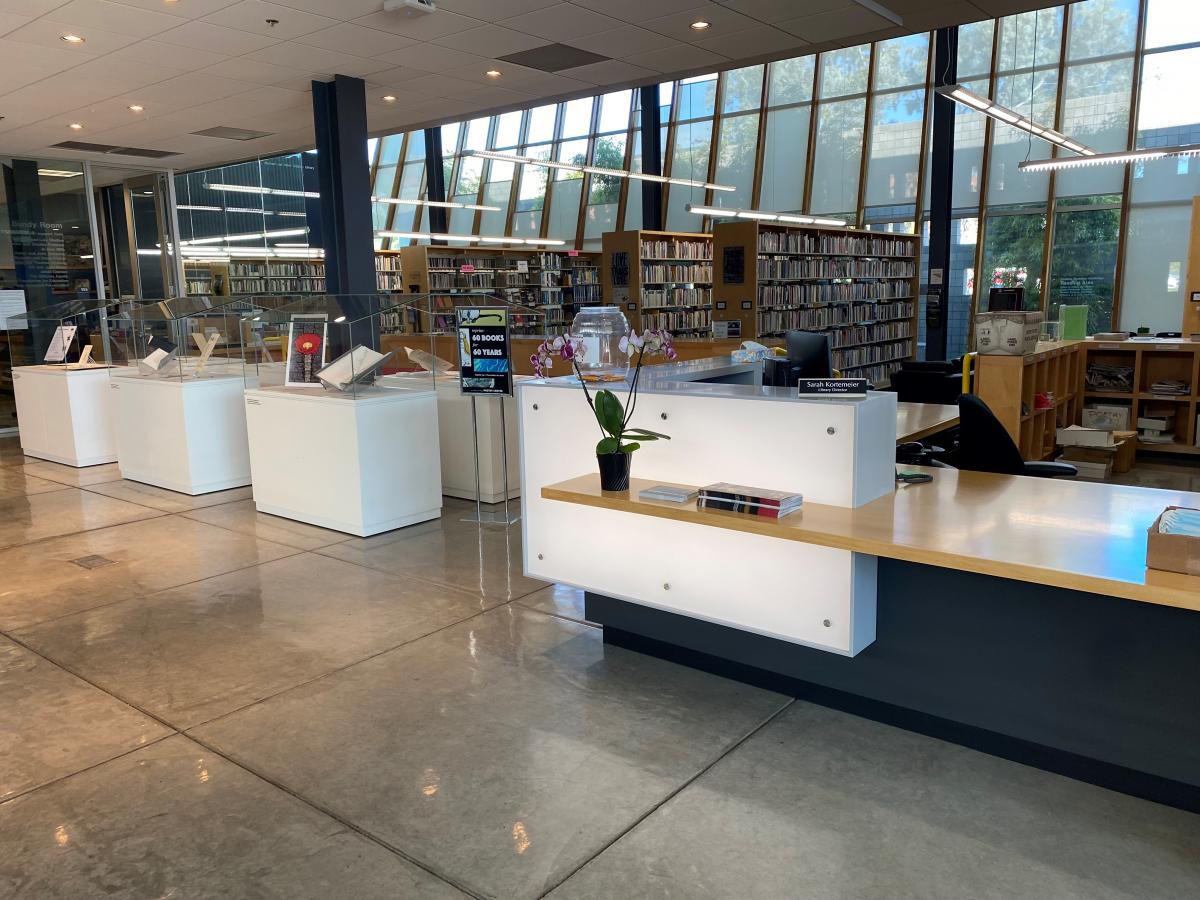Every time you walk into the Poetry Center library, you'll be greeted with 80,000+ books, broadsides, and other ephemera held in our open stacks, our archives room, and the L.R. Benes Rare Book Room. As the largest library of contemporary poetry west of the Mississippi River, we are in a unique position to share our love of books with the public. Often, however, the mark of excellence in library work is that the effort that goes into preserving this invaluable resource for years to come is unseen.
The Poetry Center's preservation efforts began with a specifically-Arizona issue: our summer monsoons. In July 2011, a library volunteer noticed that the Rare Book Room felt particularly cold. After investigation, then-Library Director Wendy Burk discovered high relative humidity in the space, and a dehumidifier was deployed to mitigate the issue. The Arizona monsoon season proved to cause annual humidity fluctuations at a level that had the potential to threaten the collection. This concern led Burk to seek out a National Endowment for the Humanities Preservation Assistance Grant for Smaller Institutions.
The grant allowed the Poetry Center to obtain expert recommendations for specialized preservation concerns, which was a catalyst for improvements in our preservation program. Randy Silverman, preservation librarian at the University of Utah’s Marriott Library, designed a Preservation Assessment for the Poetry Center. The NEH funded this grant in 2013, and Silverman conducted his assessment the following spring, creating customized preservation recommendations for the Poetry Center's collections and spaces. On Silverman’s advice, the Poetry Center “started small,” working first on low-cost initiatives (like rehousing broadsides in protective Mylar) and writing follow-up grant applications for inexpensive improvements. For example, in 2015 Burk wrote a successful follow-up grant to NEH for small equipment purchases, including a museum-grade vacuum cleaner and a hand-held environmental monitor. Burk also used the recommendations in the Preservation Planning Study to successfully advocate for the addition of 1.0 FTE to the library staff, significantly expanding staff capacity for preservation work.
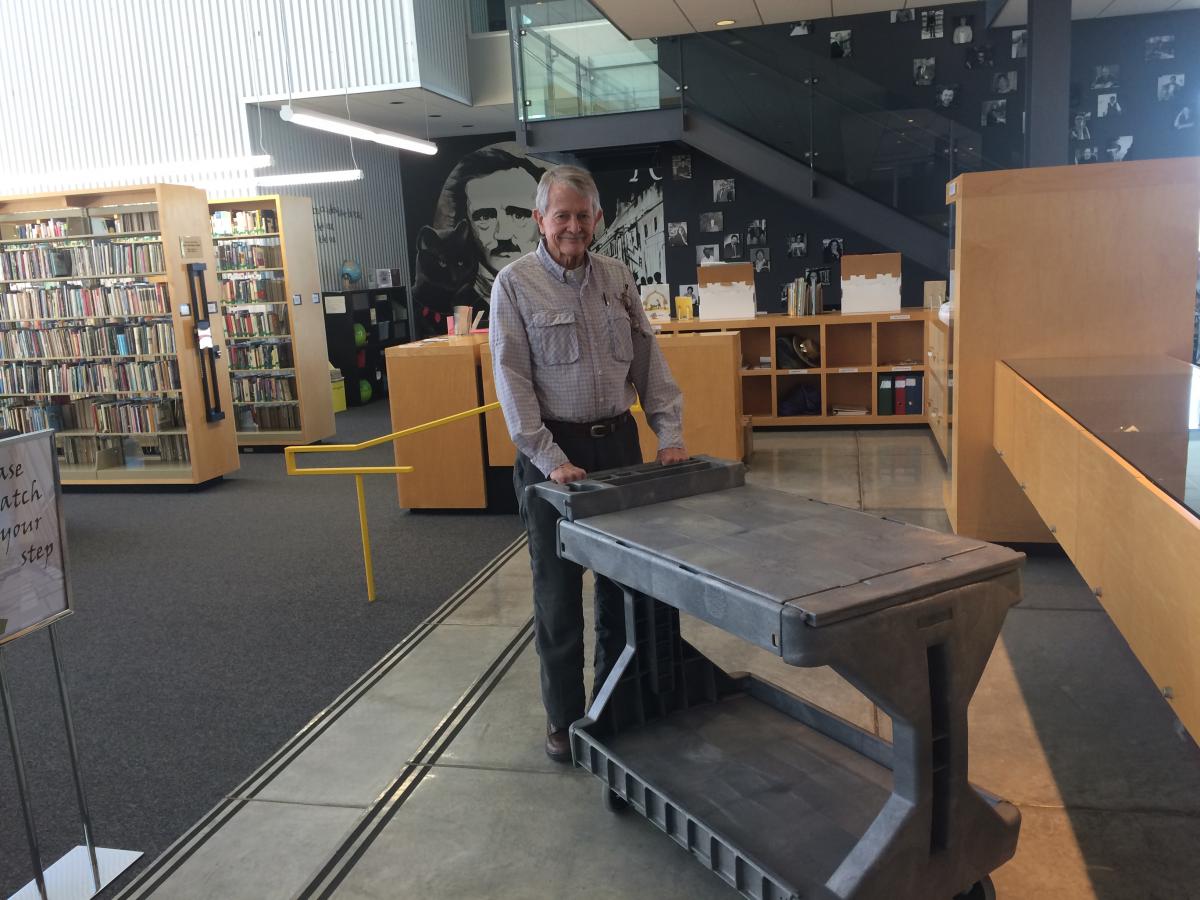
Over the course of the next five years, the library staff gradually worked up through Silverman’s list of recommendations in order of ascending project cost. This strategy allowed the Poetry Center’s staff to cite early successes in its preservation program, as well as Silverman’s expert opinion, when the time came to ask for larger funding commitments. The Preservation Planning Study provided the Poetry Center with a clear and highly actionable set of goals, which made its entire preservation program possible thereafter.
The first major preservation project the Poetry Center undertook as a result of Silverman’s assessment came in 2017, when the library staff secured funding to mitigate light levels in the main part of the Helen S. Schaefer Building. During his 2014 assessment, Silverman discovered that the beloved two-story wall of windows that light the Poetry Center’s Reading Room were allowing visible and UV light radiation into the room at rates that far exceeded recommended limits for collection storage and work areas. Silverman referred to this situation as “untenable” and existing light levels as “excessive,” recommending that the Poetry Center take immediate action to reduce light levels in its reading room.
The Poetry Center applied to several grantmakers for funding to cover the Reading Room windows with light-filtering film, ultimately winning funding for this project from the Southwestern Foundation for Education and Historical Preservation.
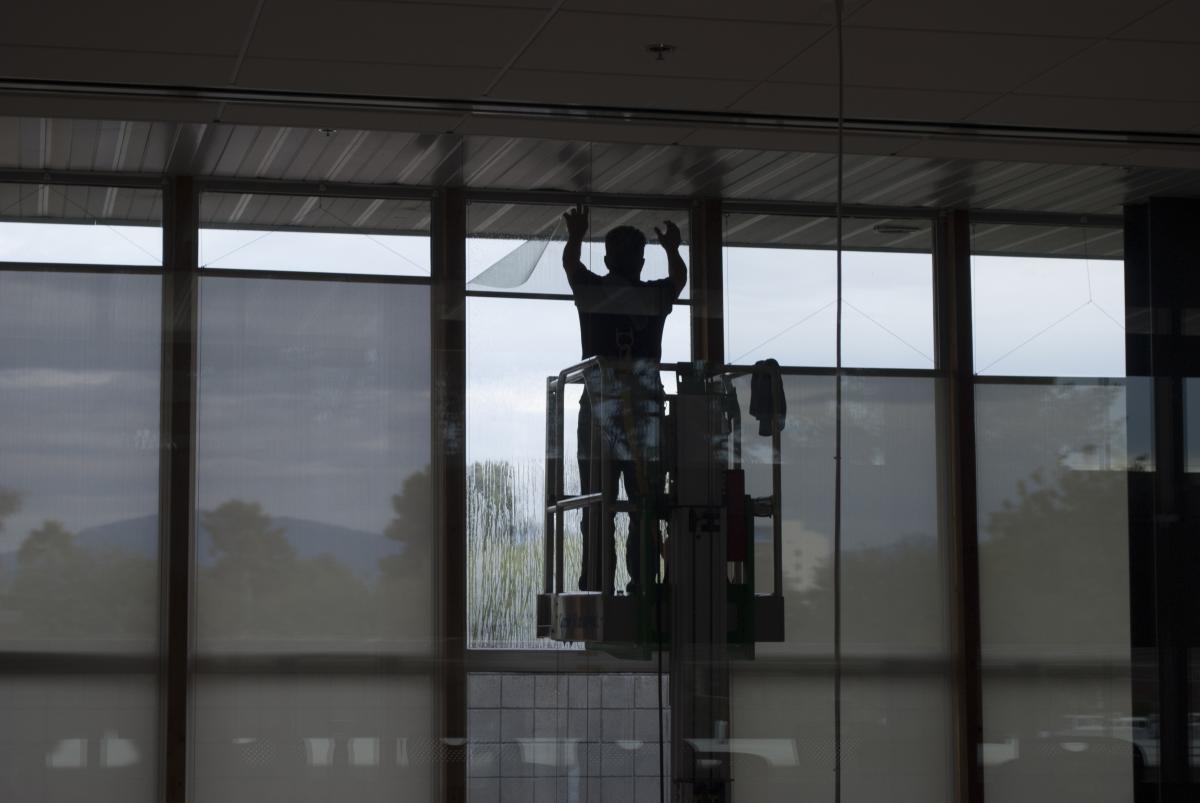
In 2018, the library launched a campaign to create a $500,000 endowment for rare book acquisitions through private donations. The library’s success in its preservation program was a major factor in the success of this effort: staff were able to demonstrate to donors that valuable new acquisitions would be cared for using industry-standard best practices and considerable institutional investments of time and money. The Poetry Center reached its fundraising goal for the rare book endowment a mere two years after launching this campaign. In addition to more robust acquisitions of rare books on a regular basis, the Poetry Center was able to use the endowment to celebrate its 60th anniversary in 2020 by purchasing 60 new rare books comprising the 60 Books for 60 Years exhibit. 60 Books for 60 Years first appeared as an online exhibit while the Poetry Center was closed in 2020 due to the COVID-19 pandemic. It was then presented in three installments of 20 books each in the Jeremy Ingalls Gallery after our reopening in Fall 2021.
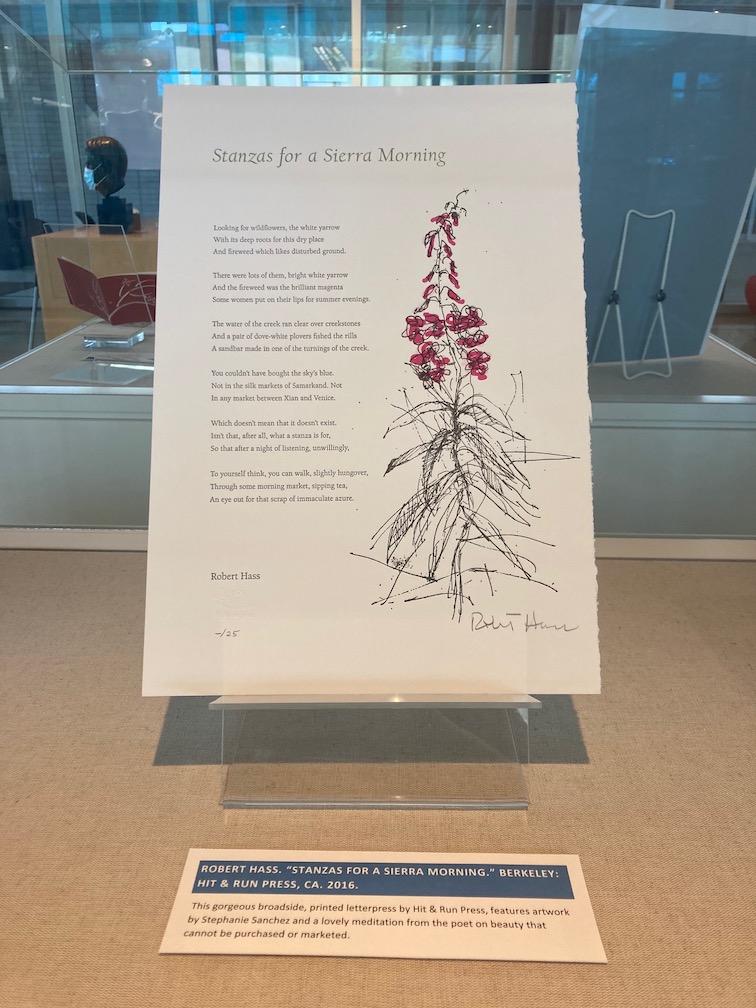
made possible by the 2018 rare books endowment, 2020-2021
In 2018, Burk left the Poetry Center, but library staff continued to work on the preservation campaign she had set in motion. As the newly appointed library director, Sarah Kortemeier led the conclusion of the Poetry Center Library's preservation program in 2019-2020 with the two most expensive projects in the Preservation Planning Study: the installation of high-density mobile shelving in the institution’s Archives Room, and the purchase of museum-grade exhibition cases for the Poetry Center’s gallery space.
For the installation of high-density mobile shelving, the Poetry Center relied on partnerships and support from a variety of sources. In order to install a compact shelving system in the Archives Room, the room had to be assessed (in terms of floor strength) for suitability, then emptied of all its collections and shelving, and collections had to be shifted out in shelf order, so that they could be reshelved later with a minimum of error. The Poetry Center was able to draw on the experience of colleagues in the University of Arizona’s Main Library who generously donated staff time to the Poetry Center for this project. With this assistance from the Main Library, and with the recommendations laid out in the Preservation Planning Study, the Poetry Center applied successfully to the NEH’s Sustaining Cultural Heritage Collections grant program for the cost of the shelving.
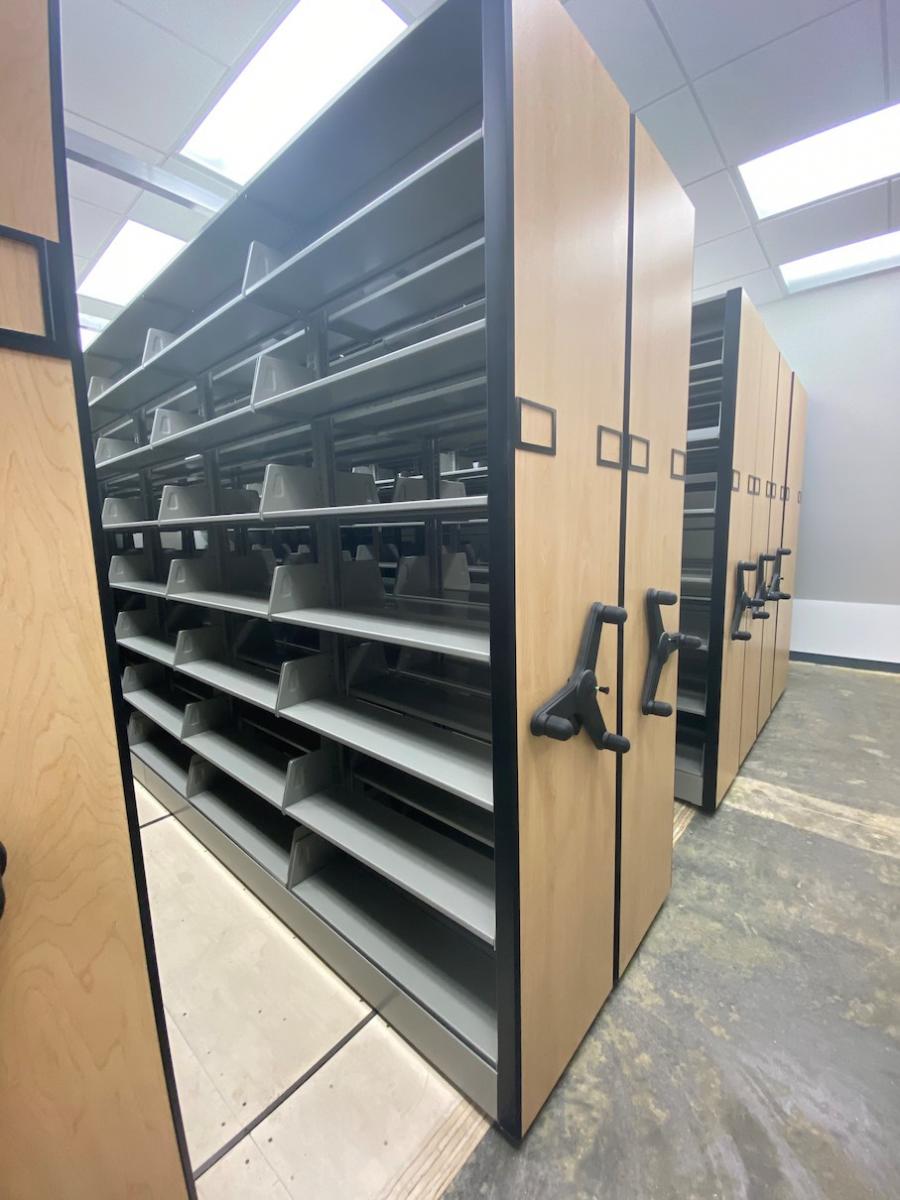
Funding for the museum cases was raised from private donors who shared the Poetry Center’s desire to make materials purchased with rare book endowment funds accessible to all in public exhibitions. With help from these generous donors, we were able to purchase new display cases from the internationally recognized German company CaseWerks. These cases were ready for use when the Poetry Center reopened in Fall 2021, when it held our 60 Books for 60 Years exhibit in the Jeremy Ingalls Gallery. The cases are fully moveable and hold a variety of features that protect the books inside while also making them easy for visitors to view.
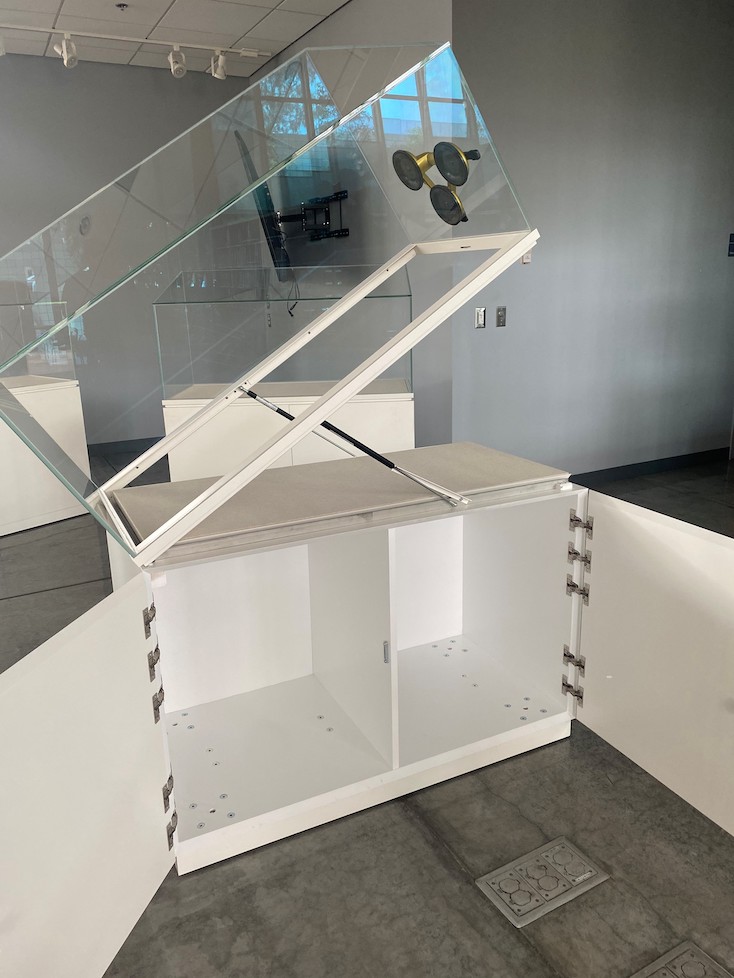
Finally, the money raised from generous donors also allowed us to redesign our gallery area, which now features new seating and a redesigned front desk area that helps our librarians better serve our patrons. Through a combination of donations and grant funding, we were able raise the nearly $900,000 necessary to complete the Preservation Assessment first begun in 2014, which will keep the books we house here safe and make our library more enjoyable and accessible for years to come.
